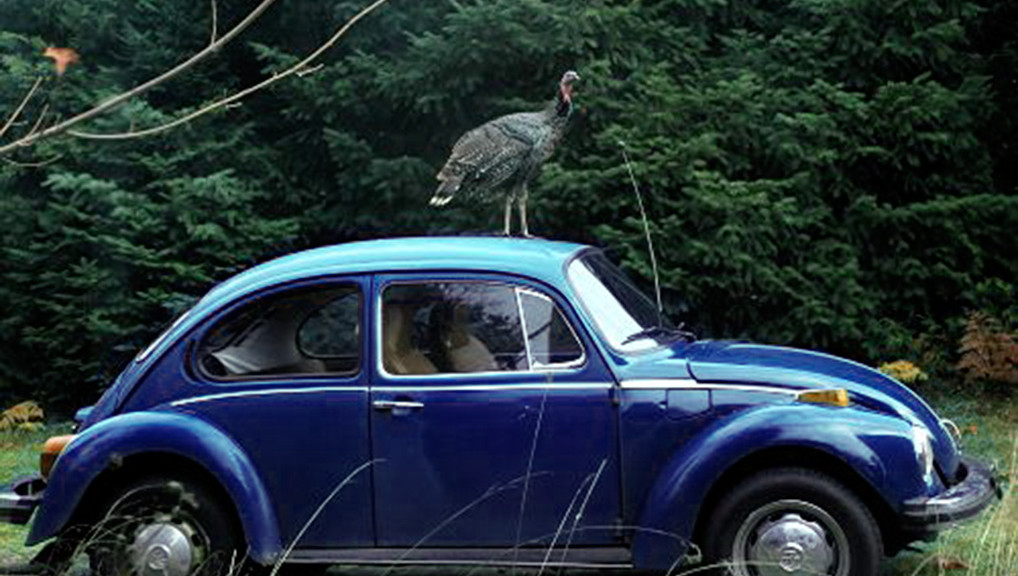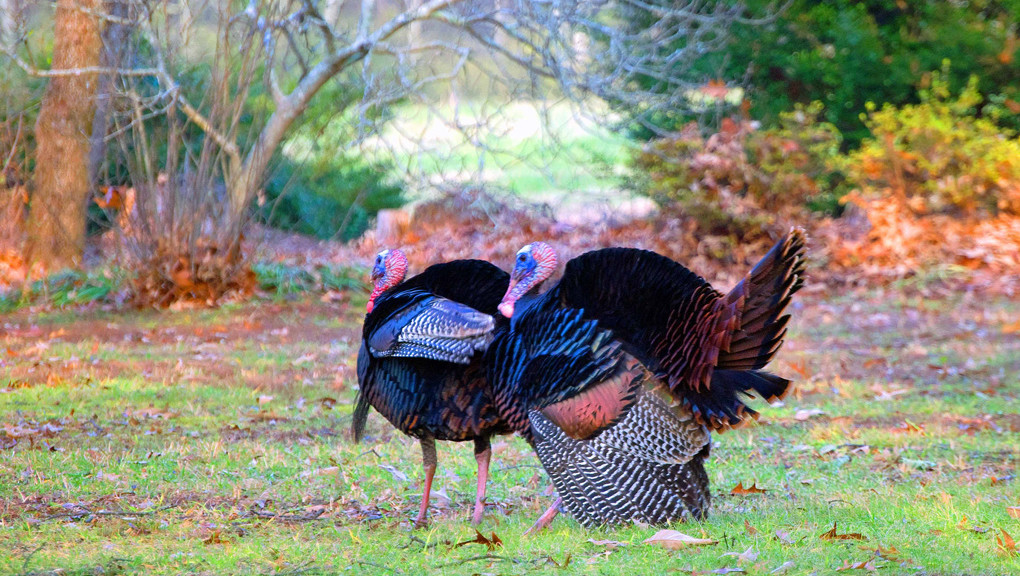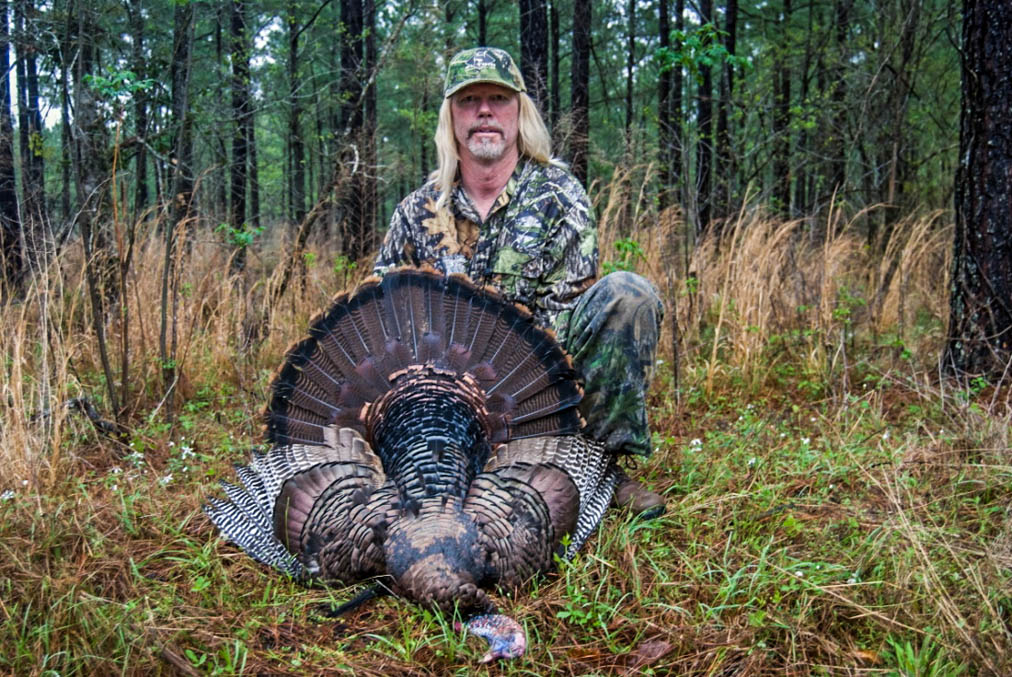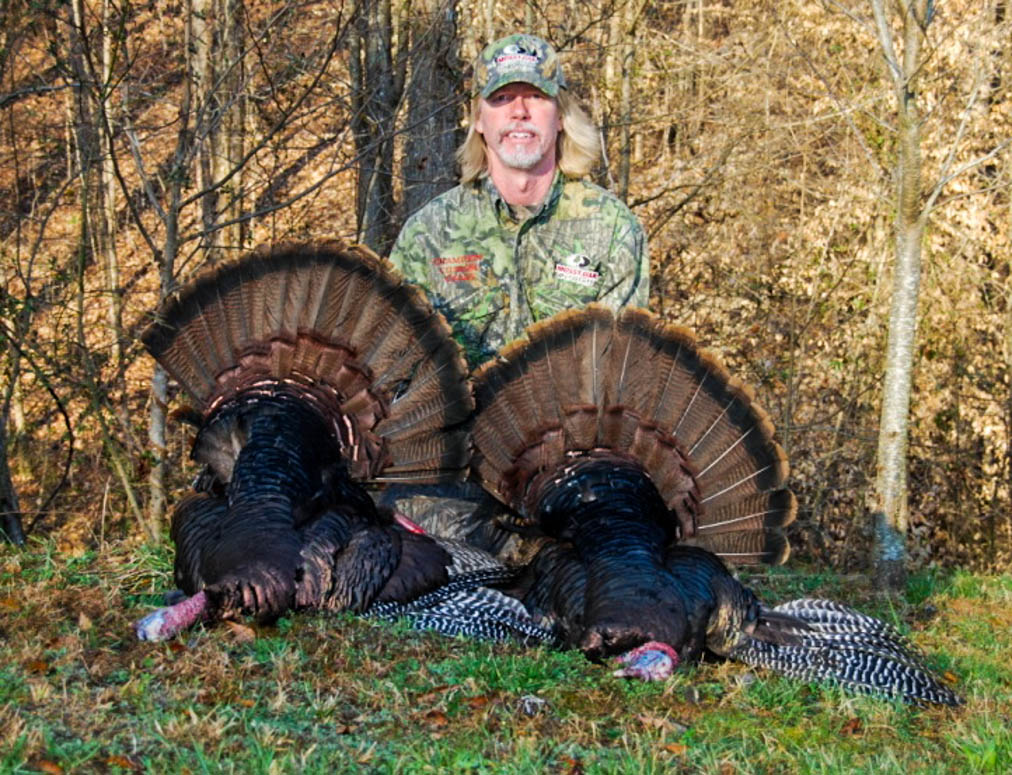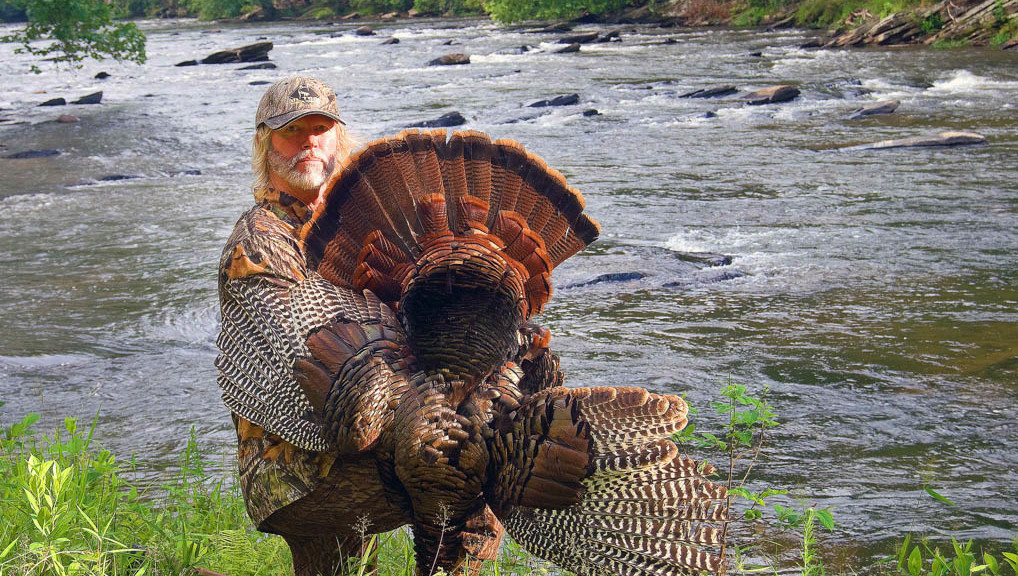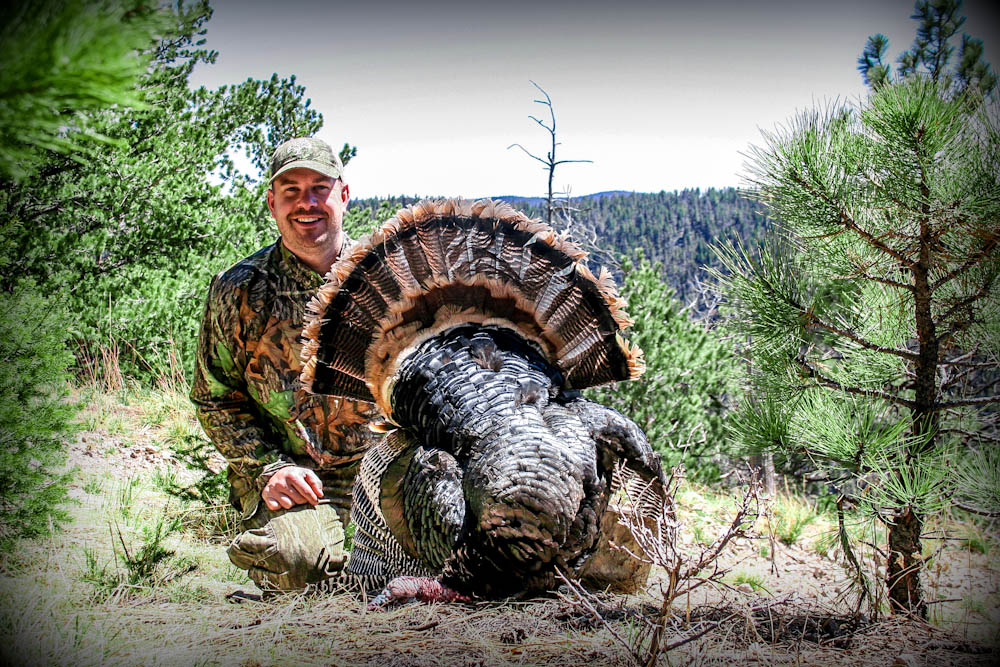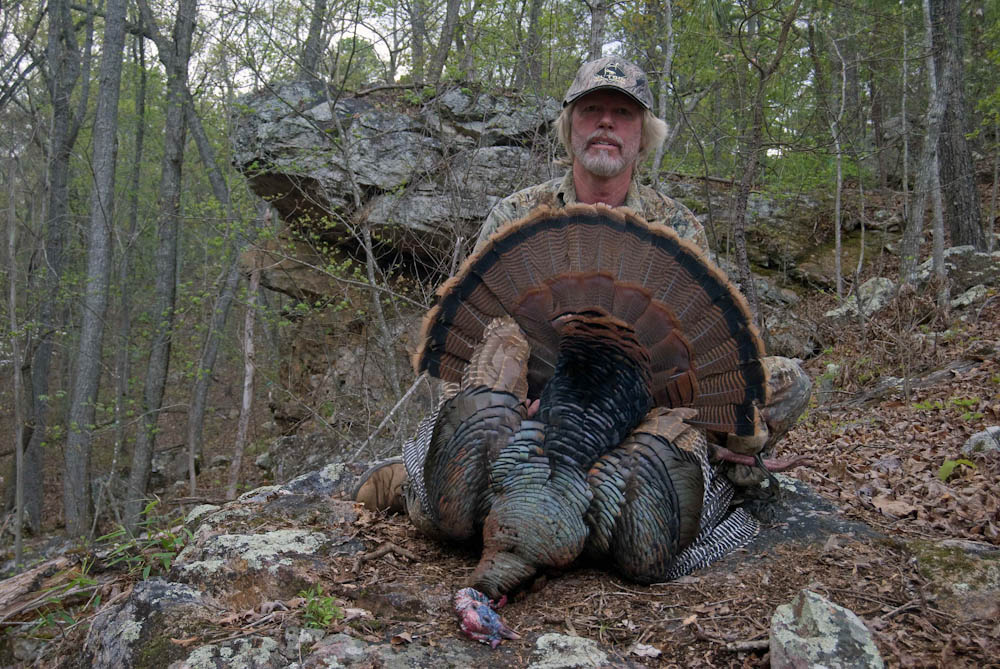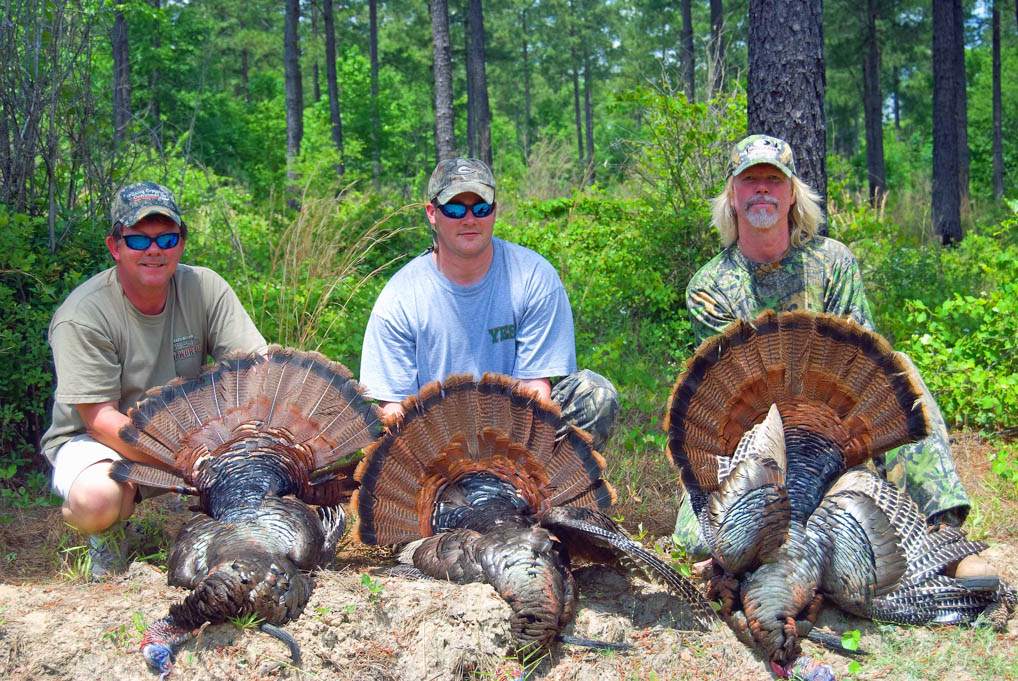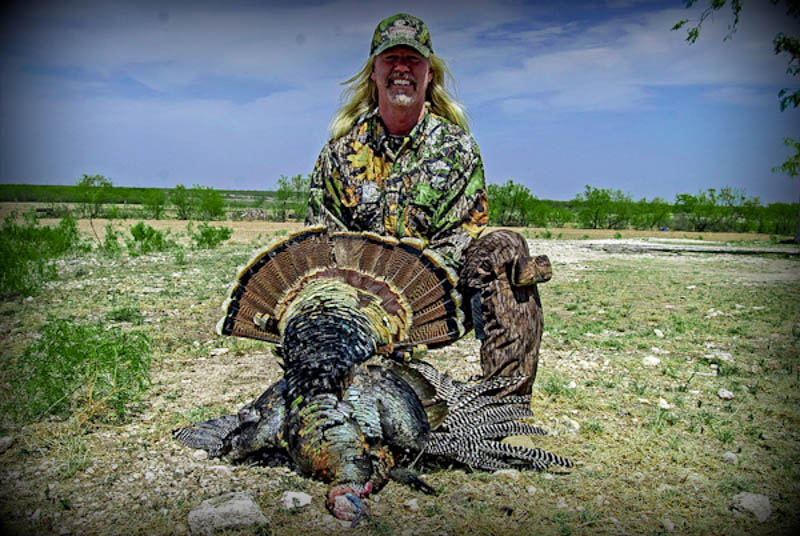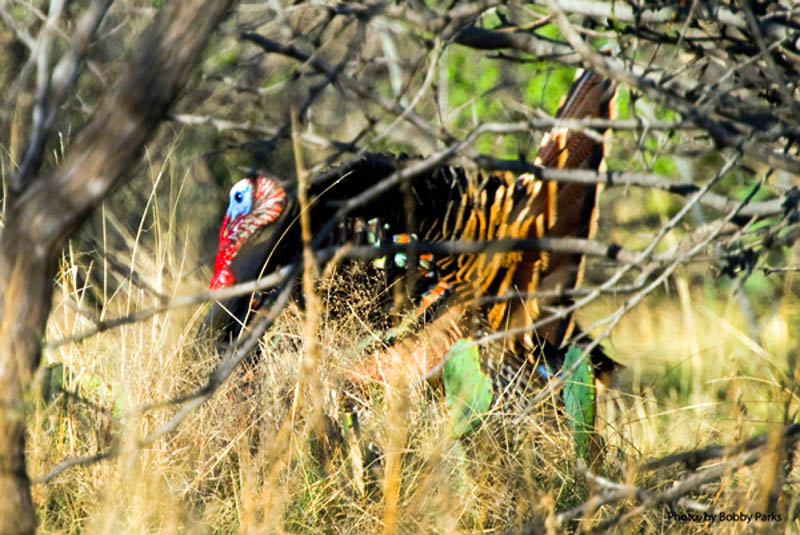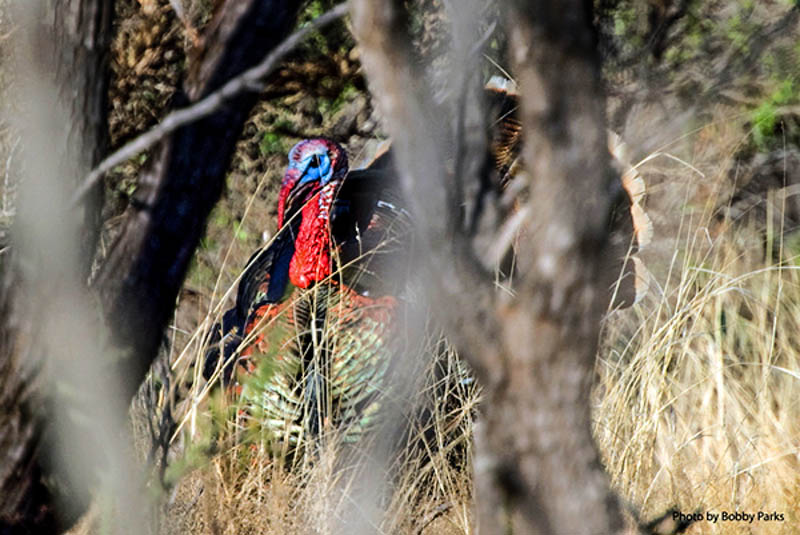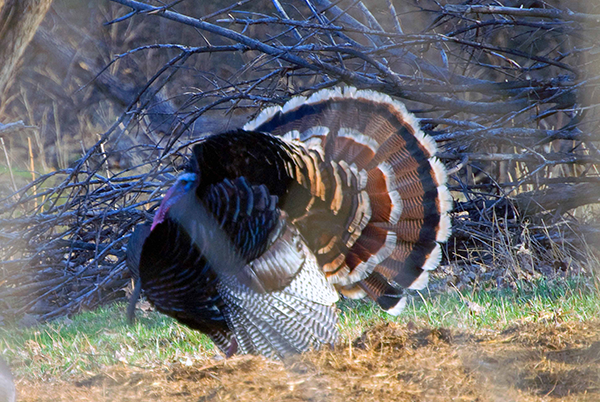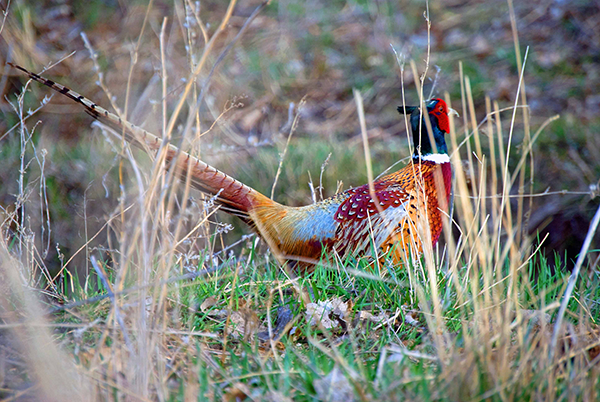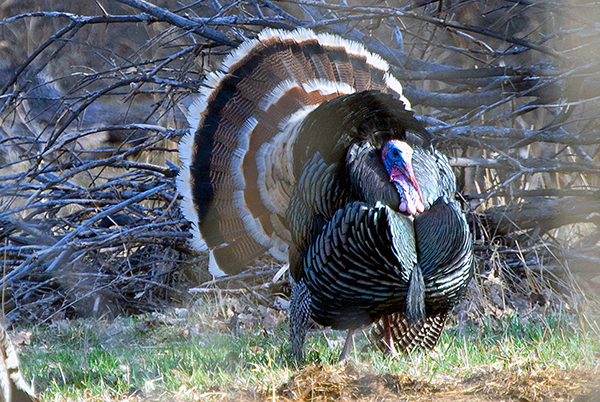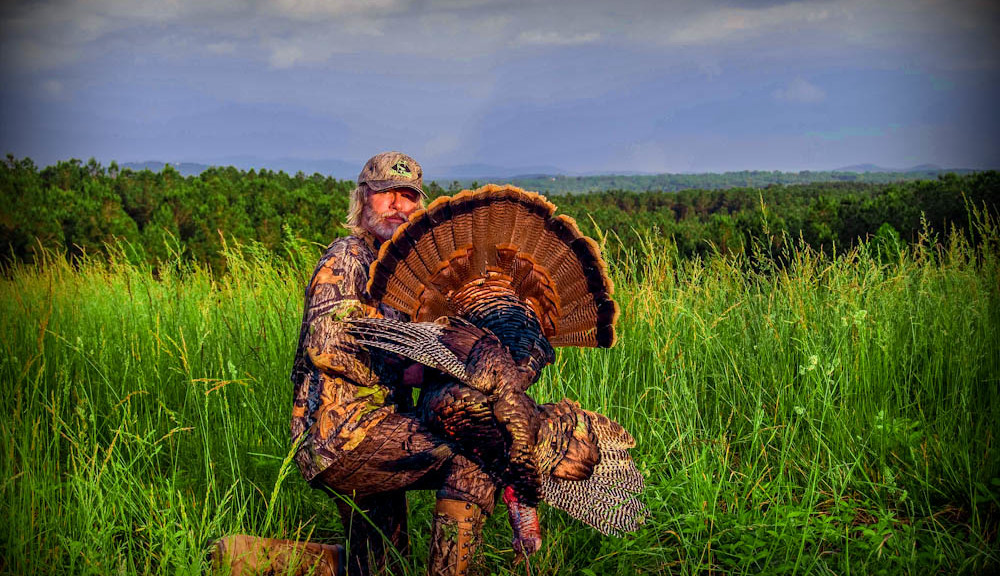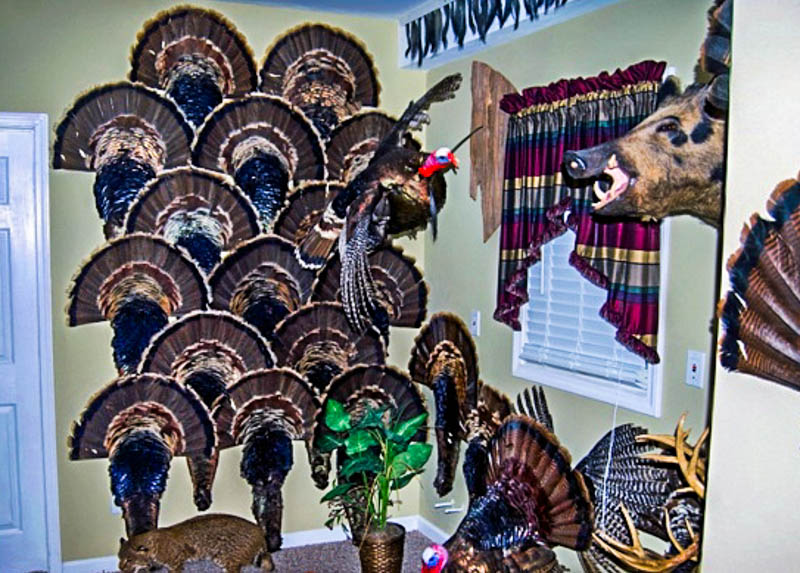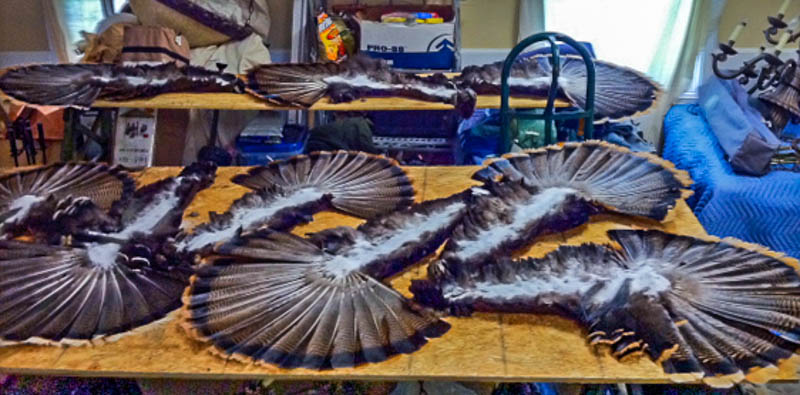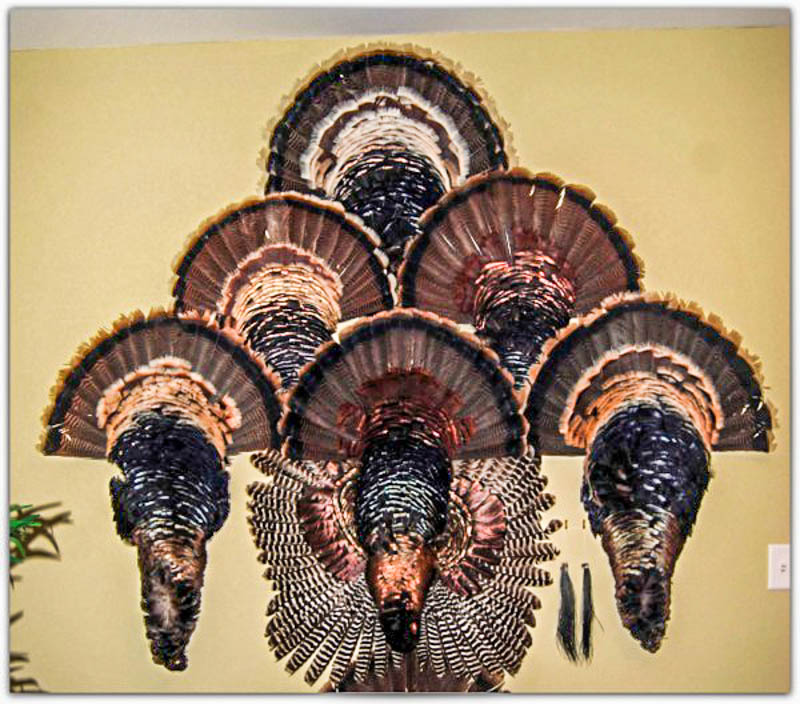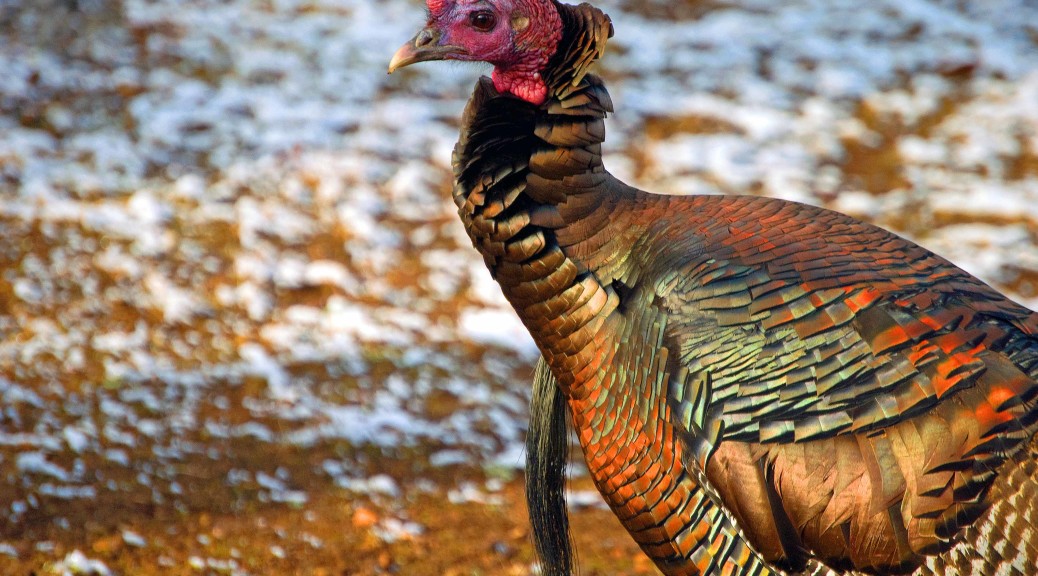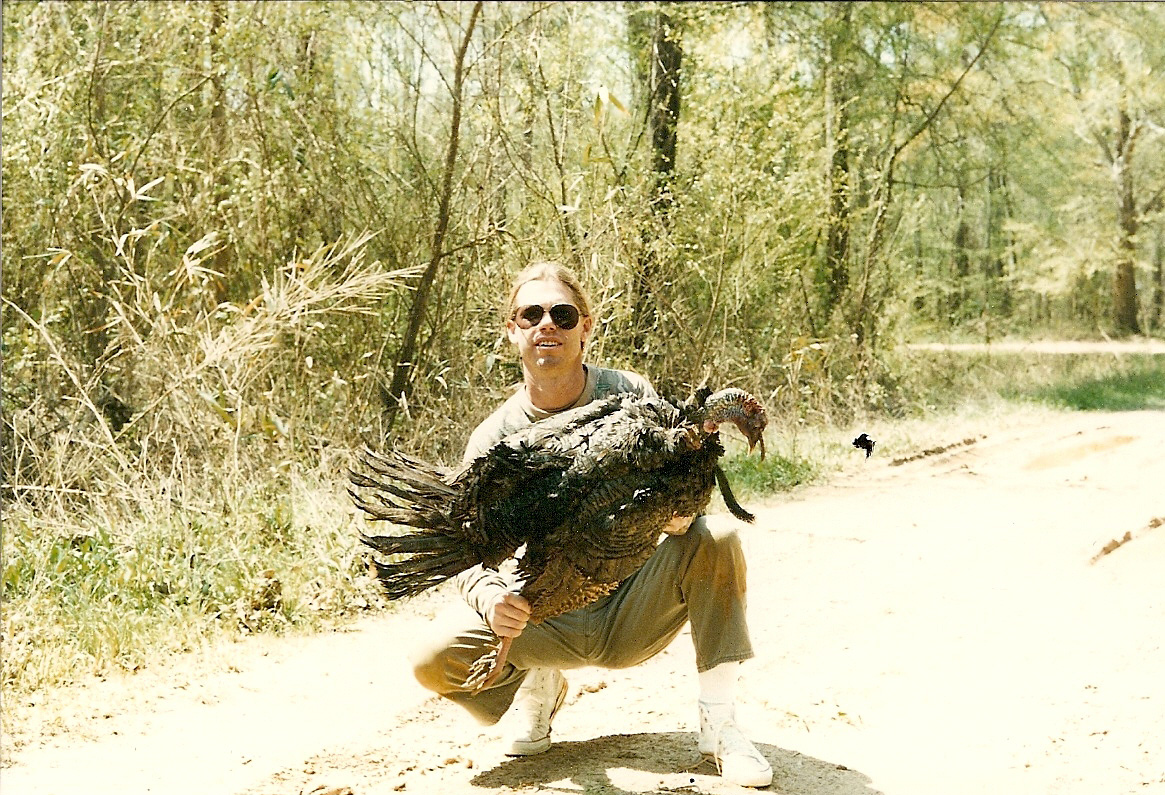I believe it’s safe to say that most turkey hunters live for the morning hunt. The gobbling at the break of day removes any question marks as to whether a gobbler is around. Excitement, enthusiasm, and adrenalin are at peak readings. The decision making process begins and an approach is applied to a given situation. This usually involves the typical form of closing in on the bird, setting, up, calling, and pointing your gun in the direction of the gobbling. You have an idea of where to be, where the bird is, and that its time to work the bird. Aggressive tactics such as trolling around trying to strike a bird and covering lots of ground often yields a positive outcome and puts you in a similar set up situation. Birds gobble and their location is known. It takes some of the guess work out of it. Again, mornings generally provide faster and hotter action making it the preferred time to turkey hunt.
The problem with mornings is they fade away and turn into afternoon and afternoon turkey hunting doesn’t always provide the same scenarios. In fact gobbling, success of aggressive tactics, and even our energy levels, fades with it. The pace of the activity dial turns down for a few hours and then tweaks back up later in the day.
I started turkey hunting afternoons 20 years ago not because I wanted to but because I was two hours away from home hunting on the Flint River and had nothing else to do once the morning hunt was over. The others that hunted our lease at that time were out of the woods by mid morning at the latest but I decided it was better to spend the afternoon in the woods even if I were napping where at least there was a chance of killing a bird. I did not know how to go about it but learned. What I soon realized was that I averaged an afternoon bird almost every year and in some cases would not have gotten a limit without that
effort.
Afternoon Turkey Hunts can be Productive
Turkey can be taken at any time of the day as long as you’re in the field and vary your approaches. Self discipline and a larger dose of patience comes into play and just what the approach entails depends on the time of day, terrain features, hunting pressure, and to an extent what part of the country you’re in. For example out west in Montana we may stay on the move most of the day looking for Merriams. In Texas when hunting Rios it’s more of a blended style of hunting involving trolling and staying with a set up for longer periods of time along with sequential calling. It’s the same in New Mexico partly because it’s physically demanding but also because staying with a set up in the right location can be very productive, especially late in the day.

South Georgia mid afternoon turkey hunt on April 10, 2012
Generally speaking, afternoon turkey hunting tactics for Easterns requires a more passive and patient mindset especially during the mid afternoon. For me it’s required a toned down approach and picking good set up locations based on scouting and knowledge of the property.
Mid Afternoon Trolling
No two turkey hunters are the same and many prefer to stay aggressive. The slower paced “sit and wait” style of hunting doesn’t work for everyone. I’ll respect anyone’s approach but I’m willing to do whatever it takes on any given day when it comes to putting a turkey on the ground as long as it’s rewarding and works for me personally. My program is to always adjust to conditions at hand and plan an approach based on conclusions drawn on a particular day. If birds are vocal I’ll stay more aggressive. If they appear to have gone quiet I turn the dial down.
I have not had a lot of luck moving and calling during the middle of the day when hunting turkey in the Southeast and as a result I slow down and move less. In fact I’ve concluded that I do more damage and probably bump birds that I‘m not even aware of when doing this. I believe you can easily contribute to the “pressure factor” if you don’t recognize that a particular style of aggressive hunting is not working at certain times or on a given day. You can wear a good property out in a hurry if you don’t at least make an effort to put thought in the pressure you’re applying.
If I do troll it’s more of a slow motion advance. I will move from location to location stopping for short periods of time and cutting as hard and loud as I can to try and shock a bird into gobbling. I may cut on a glass call, wait a
couple minutes and then do the same thing on a box call. I will use a crow call at times as well as pay attention to real crows if they appear to be harassing something. I’ll then continue moving forward. I may spend 15-30 minutes in an area that I have reason to feel good about before continuing. This assumes you have a large enough tract to keep moving on. Smaller tracts may require that you set up for a long motionless afternoon.
Successful afternoon hunting requires good scouting.
Having the right set up in my view is as important as good calling and is one of the keys to bringing a gobbler into range any time of day. Knowing the right
ground to commit time to and what bird habits are on afternoon hunts are crucial for many reasons. First of all you’ve got to be confident in a spot to have the patience to hang with it. Also the gobbler is less likely to gobble and announce his location during the middle of the afternoon so being in the right location with proper concealment and minimal movement is a must. It comes down to previous scouting, bird encounters, and your ability to read the sign and land you’re on. Even how you approach the location comes into play.
When I set up on morning hunts or on gobbling birds in the woods, I may set up in thicker terrain or just over a rise with the idea of making the gobbler have
reason to keep looking for me. I’ll rarely set up in wide open places because my experience is a gobbler that can see a long ways will just stand and gobble and not come in. Many so called hang ups are due to bad set ups. I compromise visibility distance because I have an idea of which way he’ll come in from and my guns pointed in the right direction.
On afternoon hunts, especially if I’m in the woods and not a field I’ll try to find a happy medium. I want to see further because I’m expecting the bird to come in quiet and show up unannounced. I still want him to have reason to come looking but I want to have a better view as well.
Logging roads that have turkey sign such as drag marks, dusting bowls, droppings, or tracks all add up to define a potential kill zone.

Late afternoon Idaho Merriam taken by Wesley Phelps on May 21, 2012
I’ll try and find the right tree, shade, and pile up anything that will help me blend in and hide movement. Trimming and stacking limbs, piling logs, and sometimes pulling a piece of camo netting from Abature Outpost I carry in my vest works well. When I hunted in the river swamp, palmettos were great to cut and stick in the ground around me. I brush in my back sides so if he shows up behind me I’m not busted before I have a clue he’s around. Psyching out butt pain from sitting so you don’t move is important. I wear a vest because it offers padding both underneath and behind me which allows me to sit motionless for longer periods at a time.
Field Hunting
Open areas such as pastures and fields are great places to find birds and can be especially good on rainy days. When approaching fields I use cover and terrain to slip up to view the field. I may not cut or call with a turkey call as I approach but will blast them with a crow call in an effort to shock one into sounding off. I’m not counting on this as a for sure way of knowing they’re there as gobblers sometime seem to have gone deaf for periods of time and don’t gobble at anything. But it is a way to attempt to find him without worrying about him starting towards me quietly while continuing to move towards the field. The last thing I won’t is to call and cause the bird to focus in my direction or start approaching me quietly or bump into him when I’m out of position. My preference is to sneak up close enough to glass the field with a plan of maneuvering around and setting up if I see birds.
If none are there but I know it’s a good spot and it’s just a matter of time, I’ll dig in by making a “make shift” blind, try to stay in shadows, and commit to a position for varying periods of time. If visibility and cover provides I like to back off a field 10-15 yards so that a bird has reason to search for me. It also helps with getting hens by un-spooked and if a gobbler approaches tight down the edge, I can move and get away with it compared to actually sitting right on the field.
If you’re using decoys set them up 10-15 yards out into the field (20-25 yards away from you) and often times if you snooze that’s where the gobbler will be when you wake up.
Anyone that’s hunted field birds knows how tough and stubborn they can be. You can spend hours just watching a bird that feeds and shows little interest. Once a gobblers in the field I call soft and very little unless he was responding to other calling I was doing which I would then continue. It depends on how he reacts. If he’s feeding and not interested I play it “safe” although I have had luck pulling birds across fields with fighting purrs as well.
I also start looking for a way to move around on him if he shows patterns of moving back and forth and hanging on one side of the field. If I see a way to move around and re position I’ll go for it. Just calling from a different location sometimes makes a difference. So even if I can’t make a big move, a short move of 20-50 yards towards him can make a difference. Just know that often on a field that is known to be used by birds you can bump others by trying this. It’s a judgment call and often based on hunches. Sometimes it’s due to impatience.
Calling Sequence
Generally, I’ll usually go through a calling sequence every 10-15 minutes starting soft and easy with clucks and soft yelps. I’ll then work up to more aggressive calls. Opinions vary on this and I agree that you’re probably safer
by keeping it soft and easy and calling every 15-20 minutes but it’s not always about being safe for me and I like to call. I want any bird within 250 yards to know I’m there. I’ve had good luck though the years by not being afraid to crank and let birds know some odd ball loudmouth hen is in the woods while all the other self respecting hens are just purring and minding their own business. The exception is if I really believe birds are imminent or close in which case I’ll control my tempo and exercise more patience.
I can remember many days where I sat for 2-3 hours going through 10-12 calling sequences, hearing nothing and thinking it’s just not going to happen today only to be startled by a gobbler cutting me off when I called. If this happens, he’s most likely coming in. On other hunts I’ve had gobblers gobble and announce their arrival 10-15 minutes after calling. He heard me and locked in on my position when I called earlier and is letting me know he is close to where he thought the hen should be. Consider this a lucky break but it happens often enough.
On the opposite side I have called from a spot for an hour or so, got up and walked off only to hear a bird gobble from the spot I just left 10 minutes later. Not a good feeling.
Once a bird is in sight it really does vary and it comes down to watching and reading the bird. Taking the gobbler’s temperature factors in to an extent but soft and easy once he’s in tight is the way to go if you have to call again at all. If he’s come because of your previous calling he may continue to wander into your lap. Just watch him and see what he’s going to do on his own. Even scratching on the leaves can coax him on over into range. Often a gobbler during the early to mid afternoon periods seem to have a “take it or leave it” attitude. This gets progressively better as the afternoon goes on and towards late afternoon to evening they can be as hot as in the mornings.
There are other options to consider as well. For example if I hear a bird sound off at longer distances while I’ve been in a set up for a while, I may jump and run towards him but often I give him a few minutes and call again to see if he will gobble again and to see if he was gobbling at me. If it sounds like he’s closed the distance I may stay or move forward depending on terrain and my hunch. He may very well come all the way in but if I can cut some distance off by charging forward and sitting down again and calling it can only help as long as you don’t get busted. It will appear to him as if the hen is coming towards him and may fire him up more.
If I happen to know there’s a distant obstacle such as a creek or fence in the direction he gobbled from then I’m going to make an aggressive move to get to that spot before he does.
Late Afternoons
My experience in afternoons, at least where I’ve hunted Easterns is almost no gobbling occurs until after 5:00. My attitude and enthusiasm picks up accordingly as the day wears on. I may have set up in a particular area for specific reasons for mid day hunts and re locate to put myself in a general roosting area or travel route for late day set ups. I want to be within hearing range of any known roosting locations but not pushing the limit to the point I change their habits if a bird bust me. That’s said; I am not beyond getting in tight on a roost if I’m traveling and I’m running out of time. It depends on how badly I won’t a bird. Many argue against this and I believe it depends on circumstances and properties.
For example in Texas there are places that many birds will roost night after night. To get in tight and cause a scene would change their habits and make them harder to hunt on following days or for future hunters. I avoid pushing too hard there. If there are such placesthat are known on your hunting properties to be consistently holding roosted birds it is a good idea to give them somewhat of a berth so that you’ll know where to get after them on morning hunts at least early in the season.
For public land birds, limited hunting opportunities, or if you are running out of time, I would push in tight on roost areas. Let me put it this way. Most hunters will get as close to a roosted bird in the morning in the dark as they can. So I’m not sure what the real difference in hunting tight in the evening is compared to mornings. You risk busting the bird either way or disturbing a possible pattern. If there’s an argument here I’d say its more in regards to an individual believe about bushwhacking but that’s not what I’m suggesting. I still call and try and pull a bird over. Most Eastern birds I’ve hunted roost in a general area and not in the same tree.
The bottom line is I want to set up where birds have reason to be at certain times of day. Being within ear shot of a roost area or knowing travel routes back to them make sense in terms of trying to kill a bird. This can be done without pushing them out of an area.
For What its worth
Last year I killed all three of my Georgia Easterns and at least one of my two New Mexico birds in the afternoon. Grant killed a mid afternoon NM Merriams at 1:00 while a large group of us were sitting around eating lunch. Wesley killed the Idaho gobbler late in the day and may have killed others in the afternoon, I can’t remember. Jim Bates who has a technique I’ll describe as a “really long morning hunt”. The past two years he has hunted with us in Georgia and Alabama and he goes in before light and we don’t see him again until dark. He knows that you can’t kill em in camp and he always finds a way to put himself in a position to be successful all day long.
Afternoons can be long, hot, buggy, and boring. But they can provide opportunities.
Varied Approaches
It should be noted that the afternoon approaches I’ve discussed here work on morning hunts as well if birds are “quiet”.
I realize no two turkey hunters are alike, we all have our own style, and we all swear by what has worked in the past. Some of us are more fortunate than others when it comes to having the time to hunt and good turkey woods to hunt in. My time is somewhat limited but I have been pretty lucky when it comes to places to hunt.
For me it has been all about being open minded, flexible, and adopting blended tactics. As much as I want to hunt gobbling birds aggressively, I’ve learned to adjust and incorporate approaches that yielded results under many different circumstances in many different parts of the country when birds are quiet or during afternoons. I’m a turkey hunter that respects wildlife, enjoys the woods, and the camaraderie. But I do like to kill turkeys. I will run to a gobbling morning bird but I am willing to sit still for hours in a spot if I believe that’s what it takes on those quiet days or long afternoons.
The key is to learn how to identify through scouting the right locations to commit to, have the confidence and patience to stay with the plan, and be satisfied with a varied style of hunting.
Bobby Parks
Grand Slam Network
Mossy Oak Pro Staff
Ol Tom Field Expert
